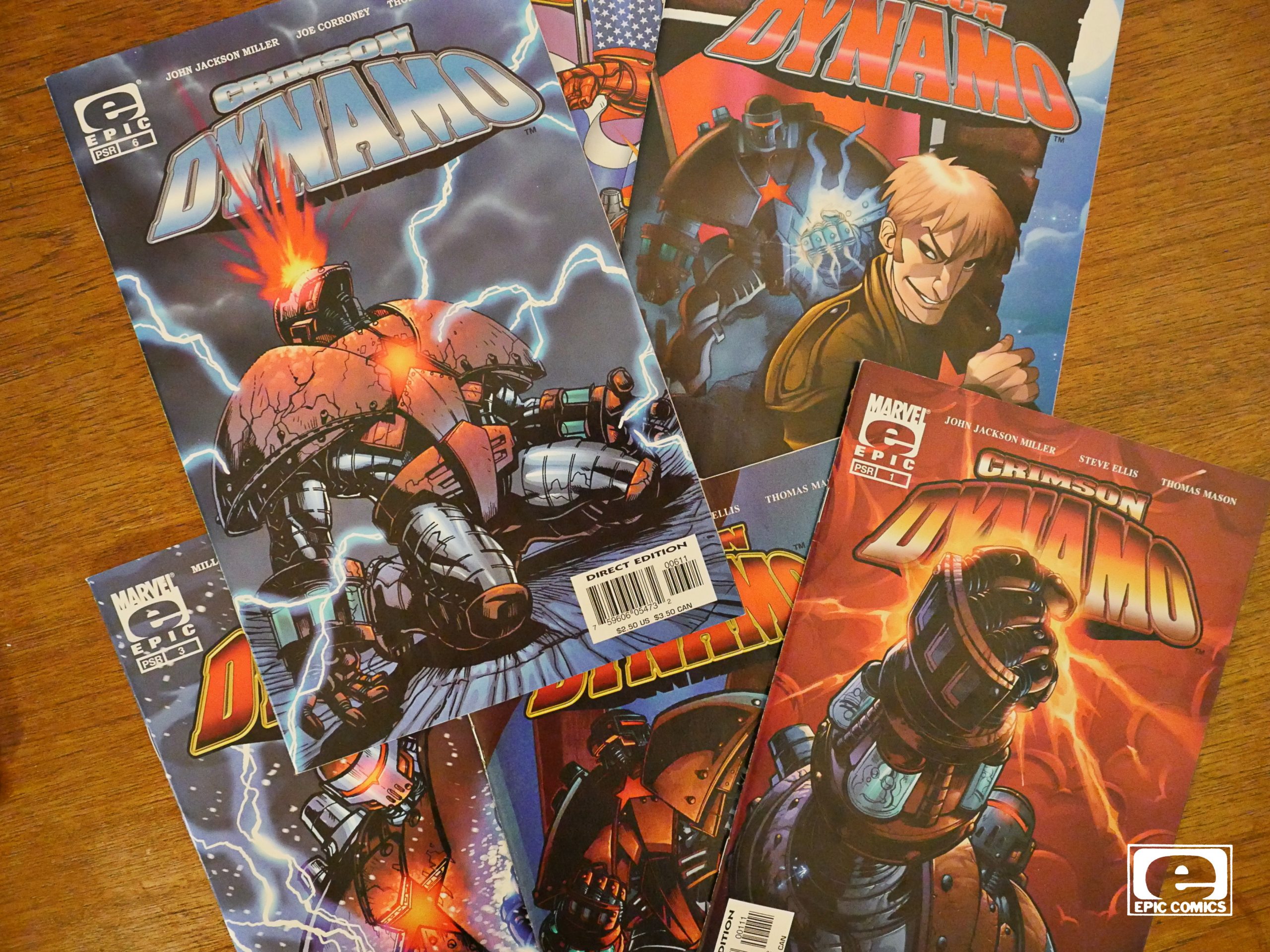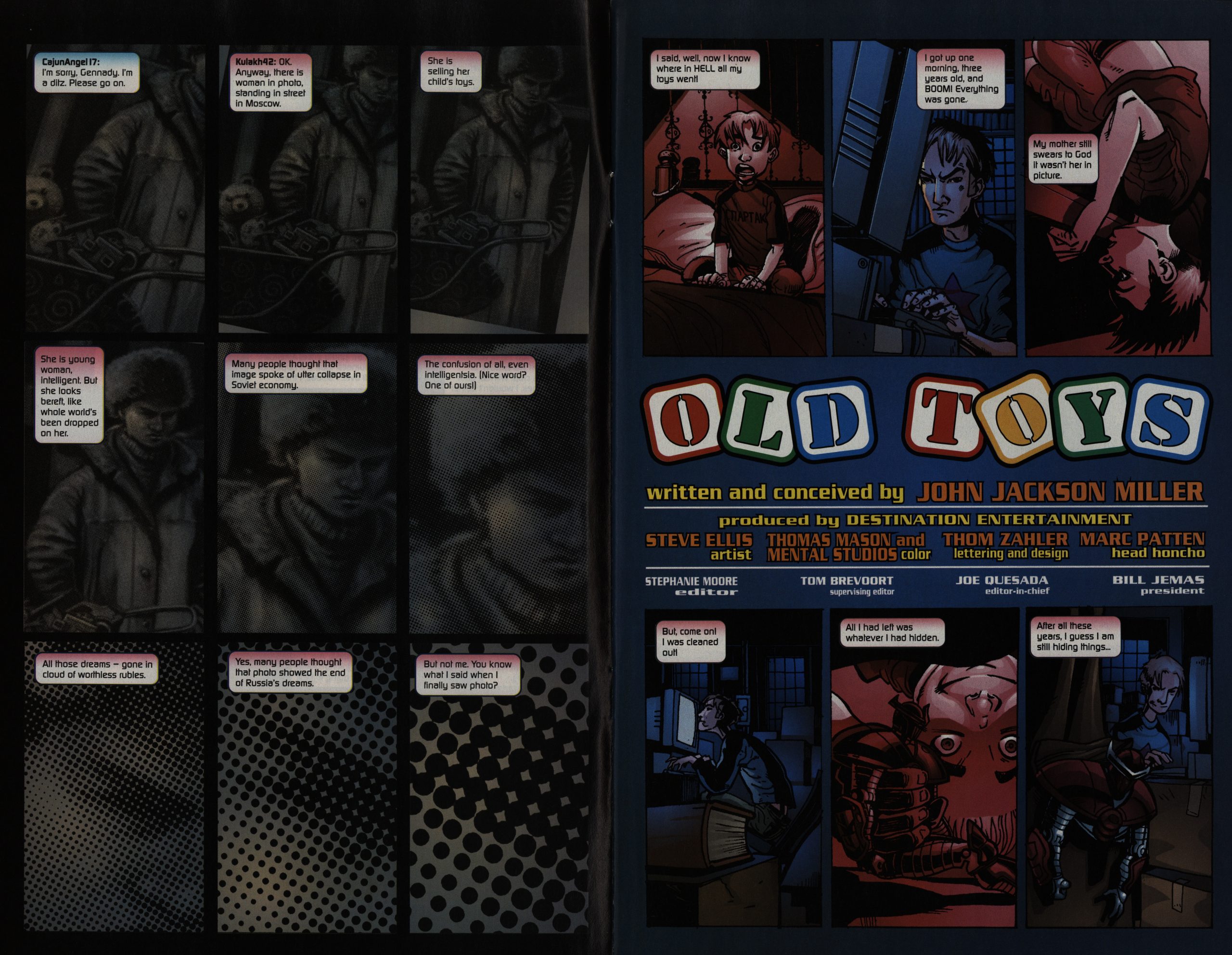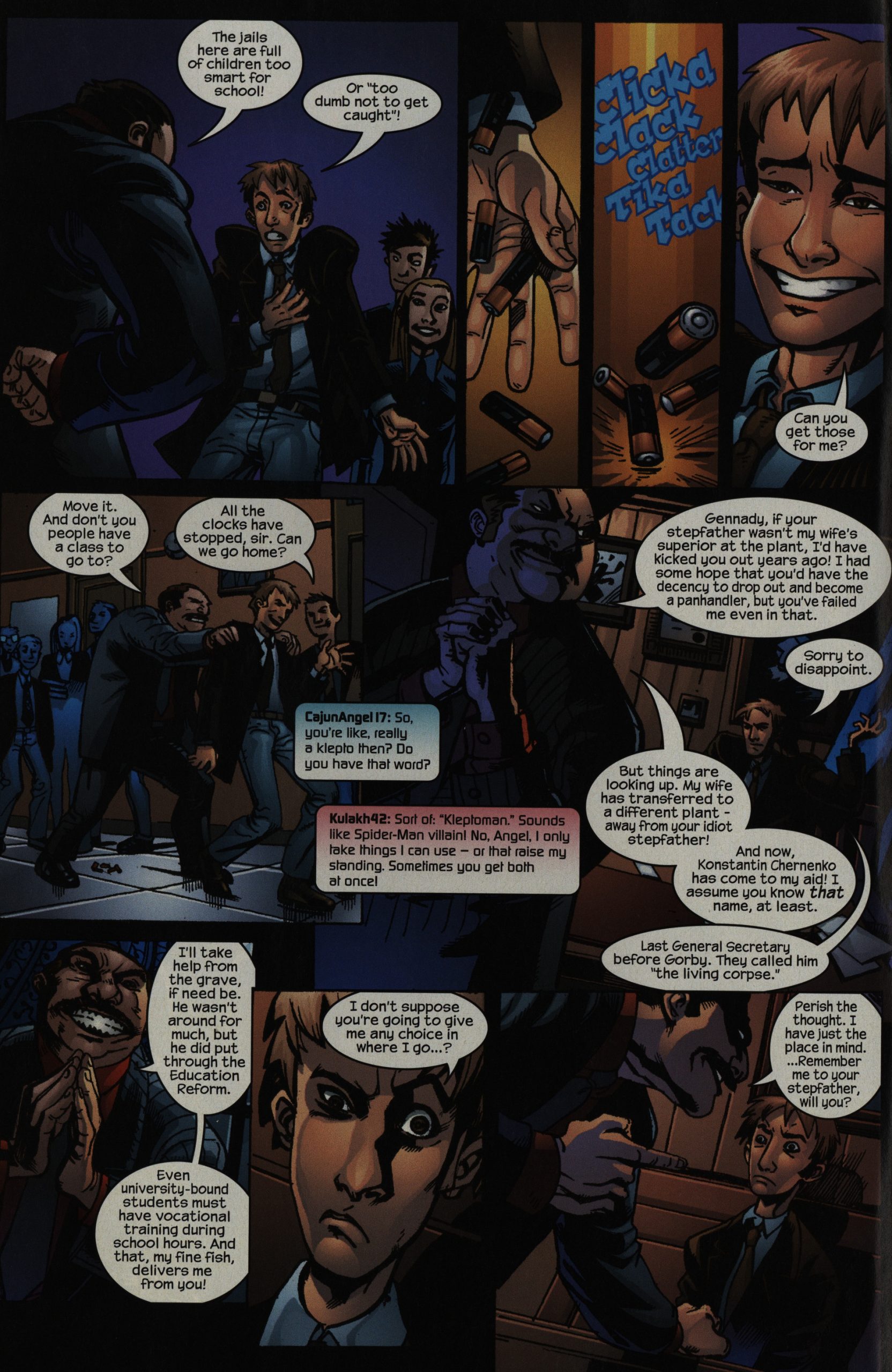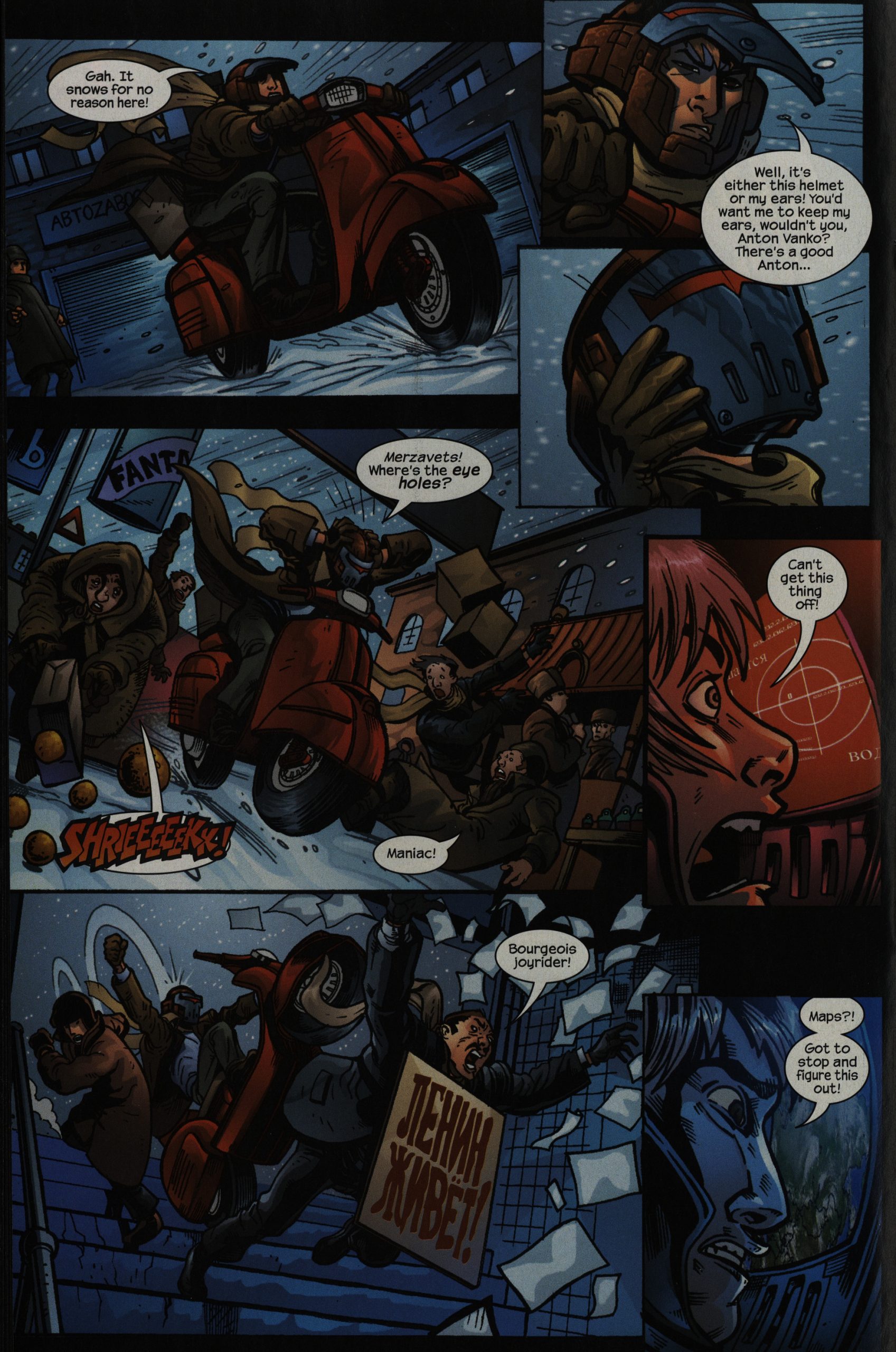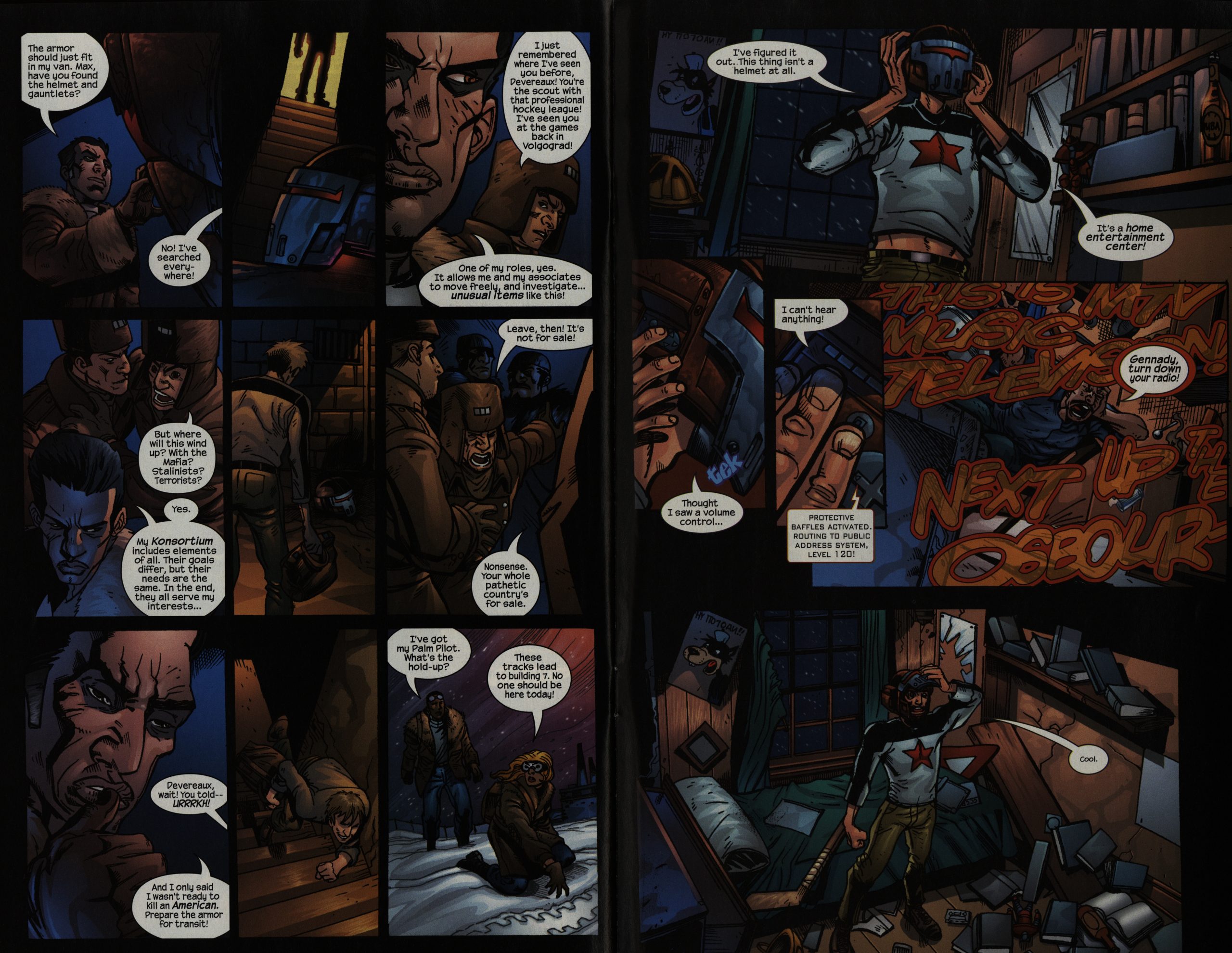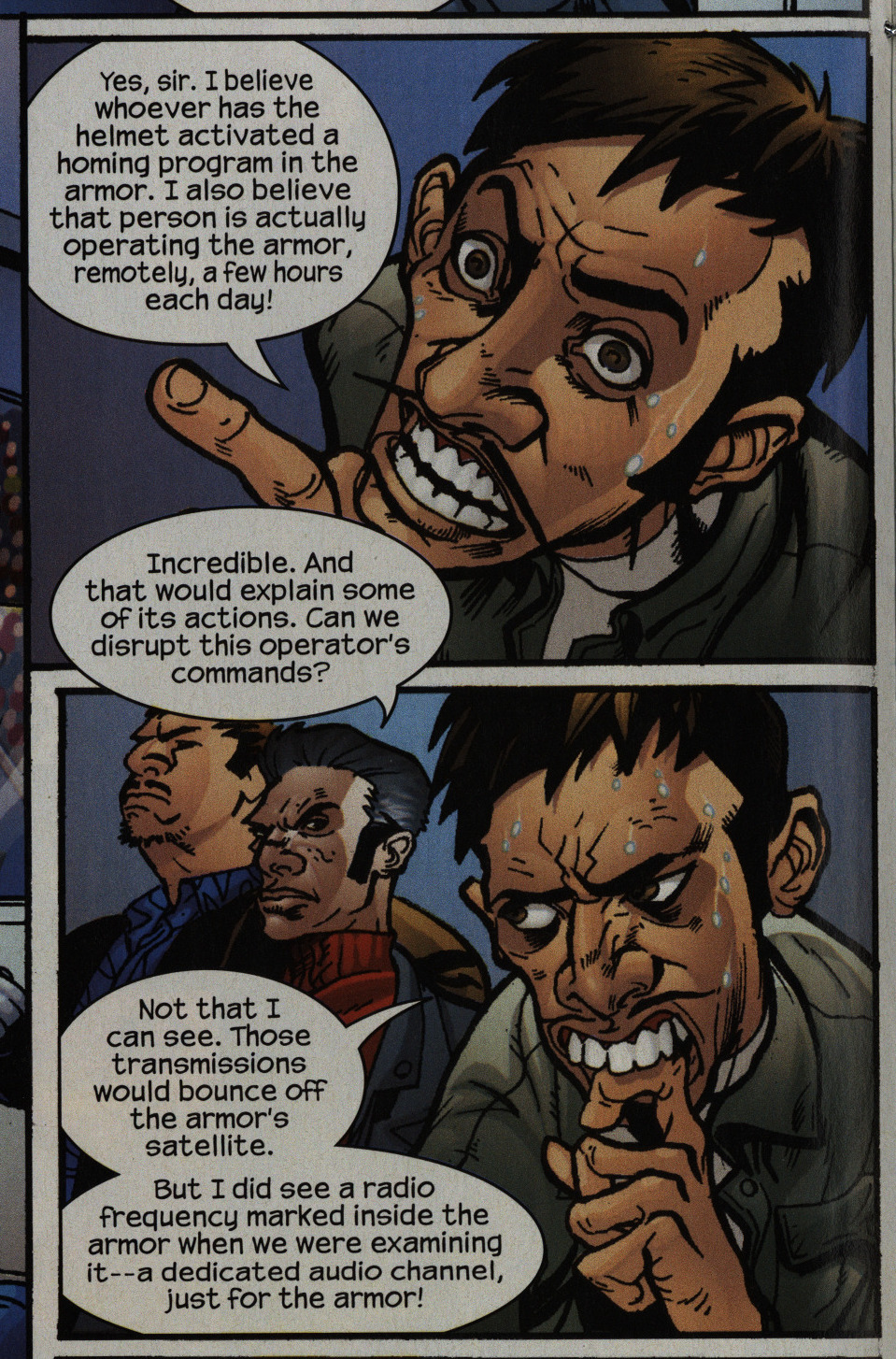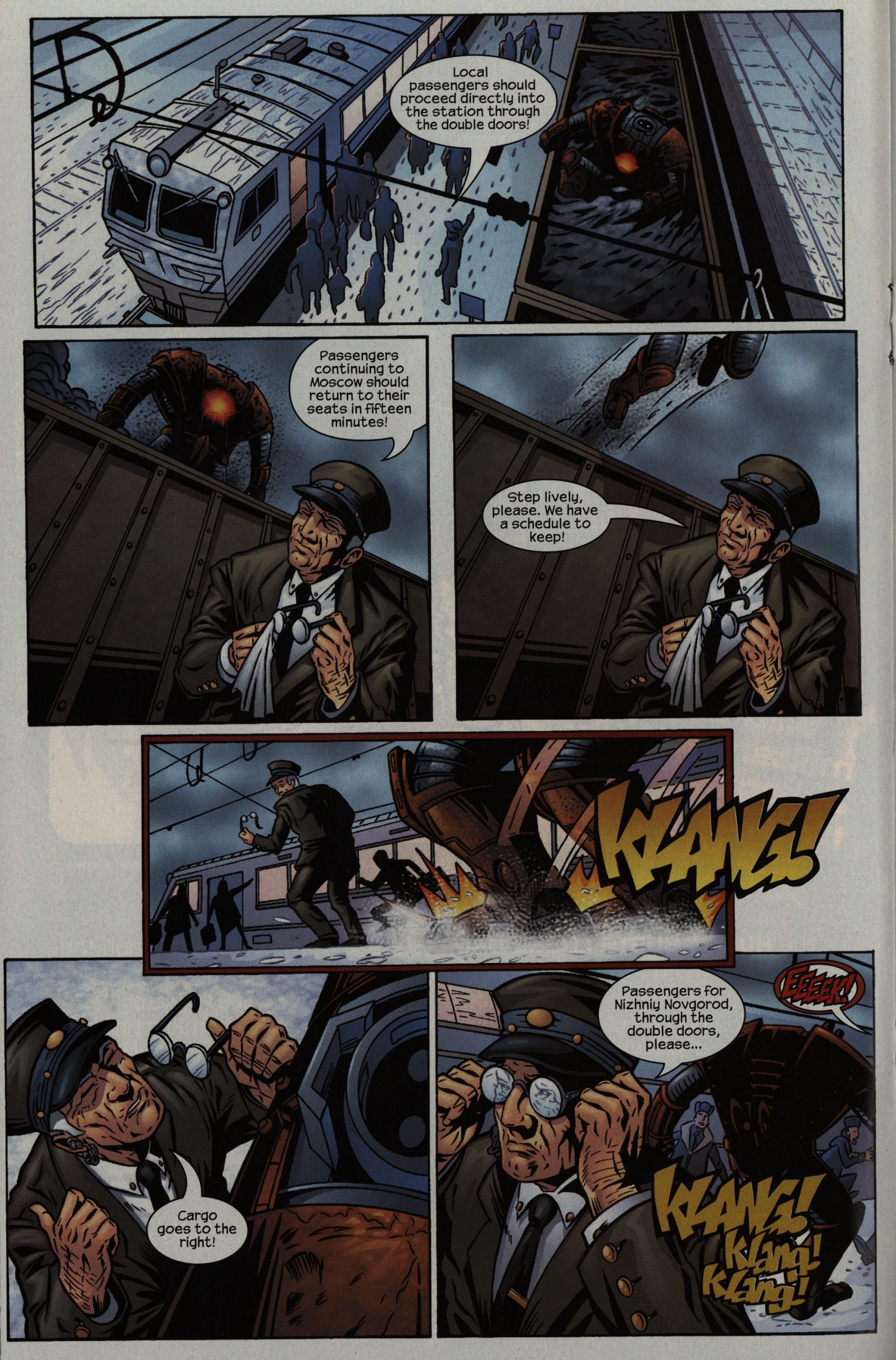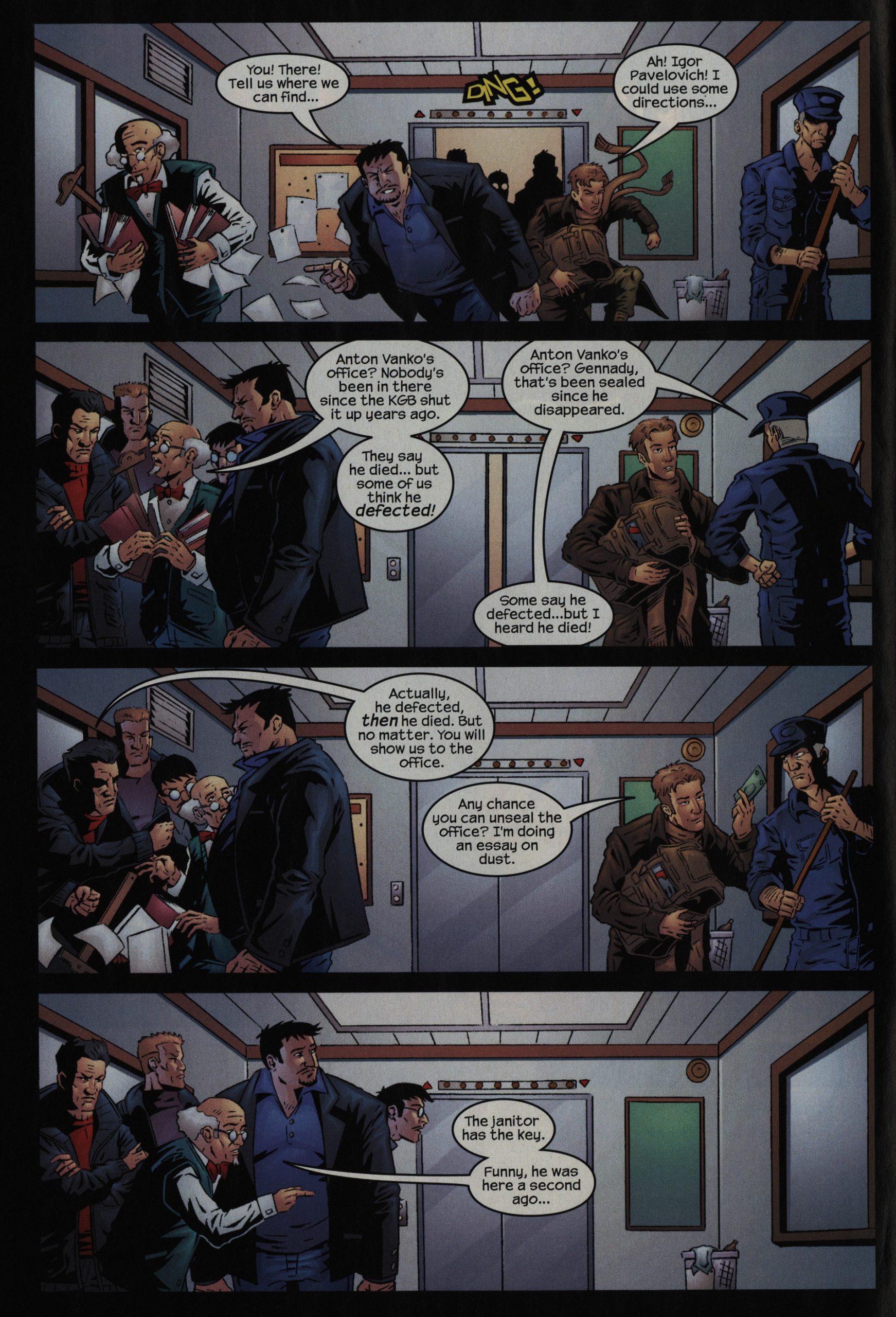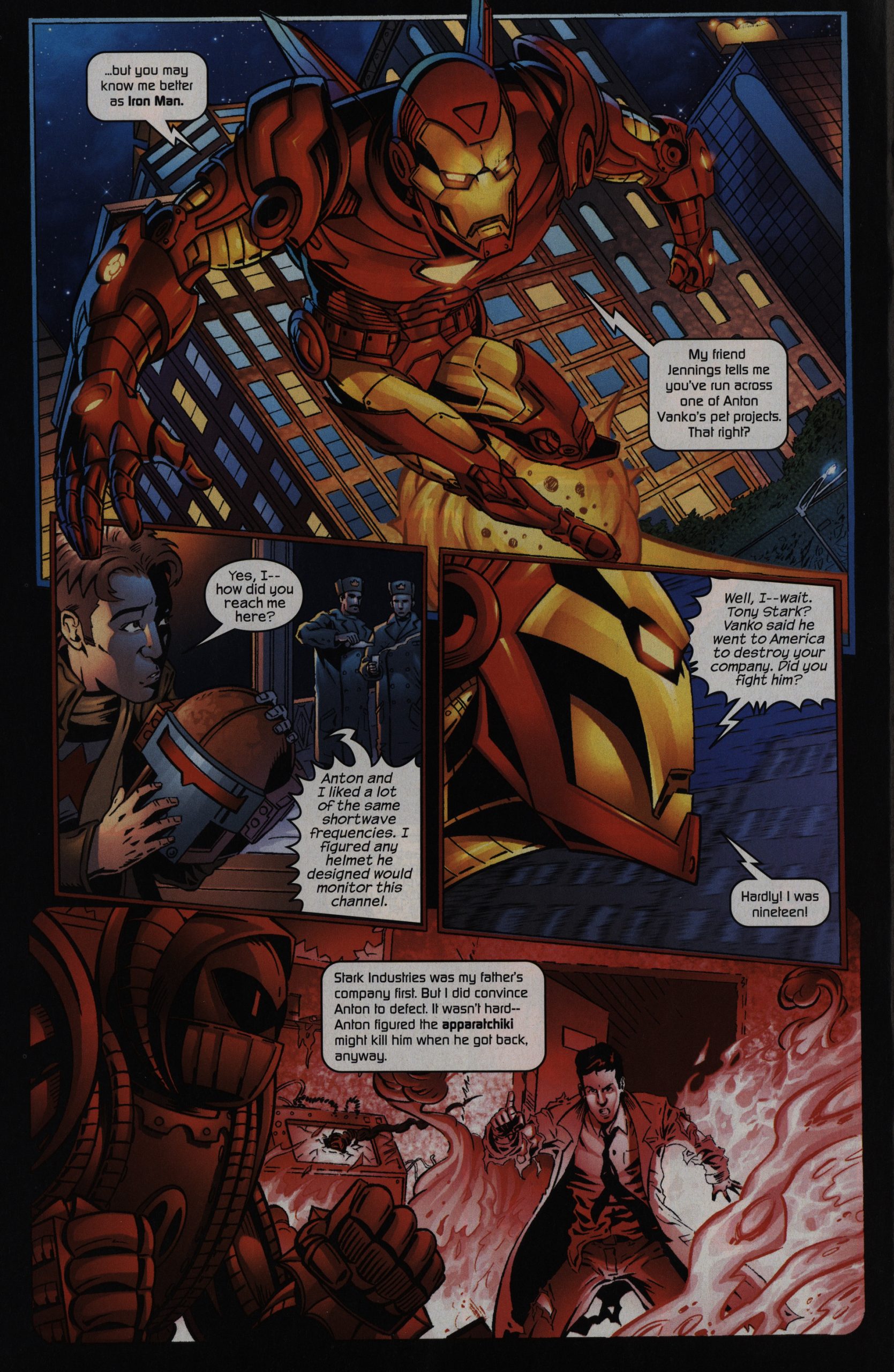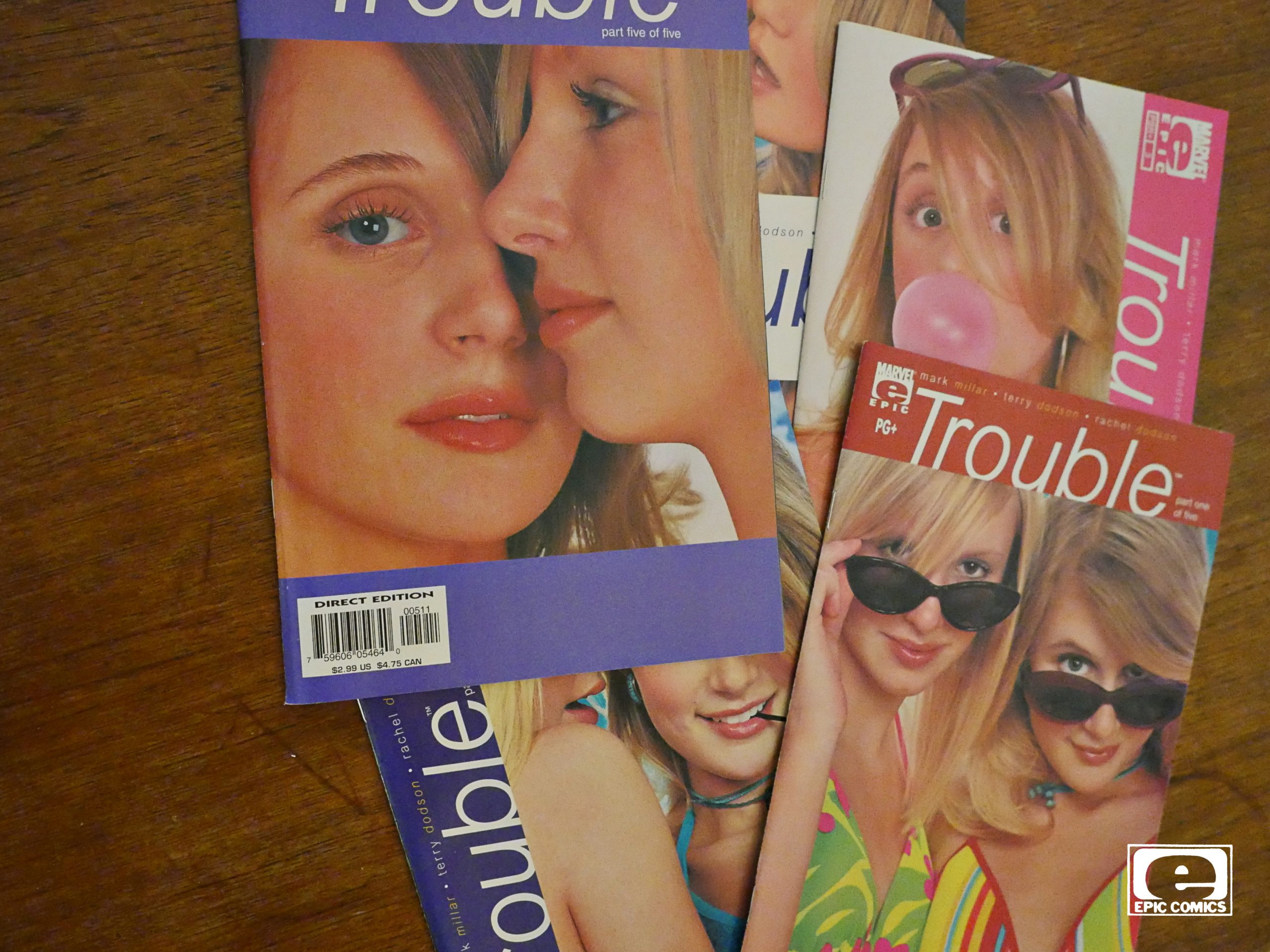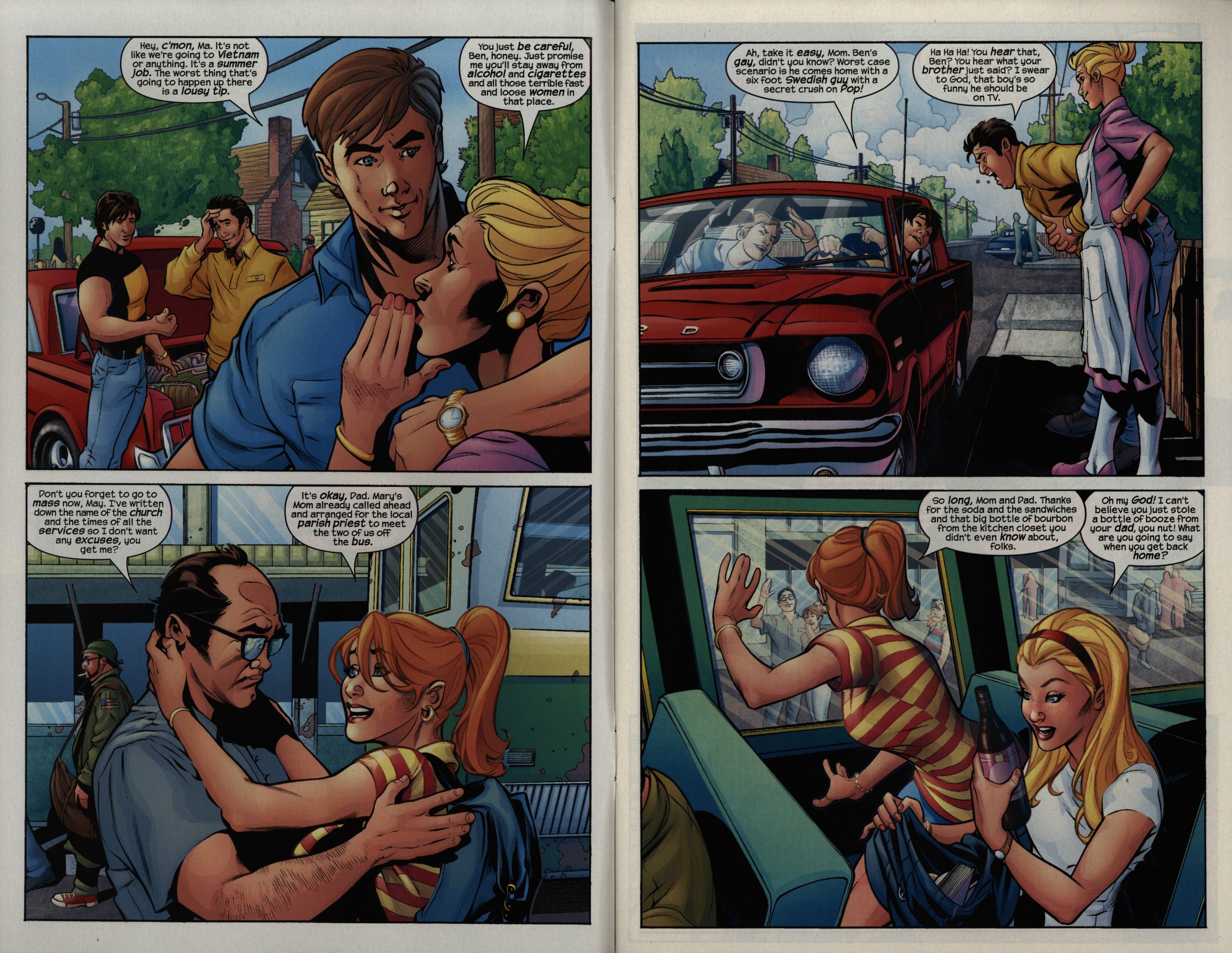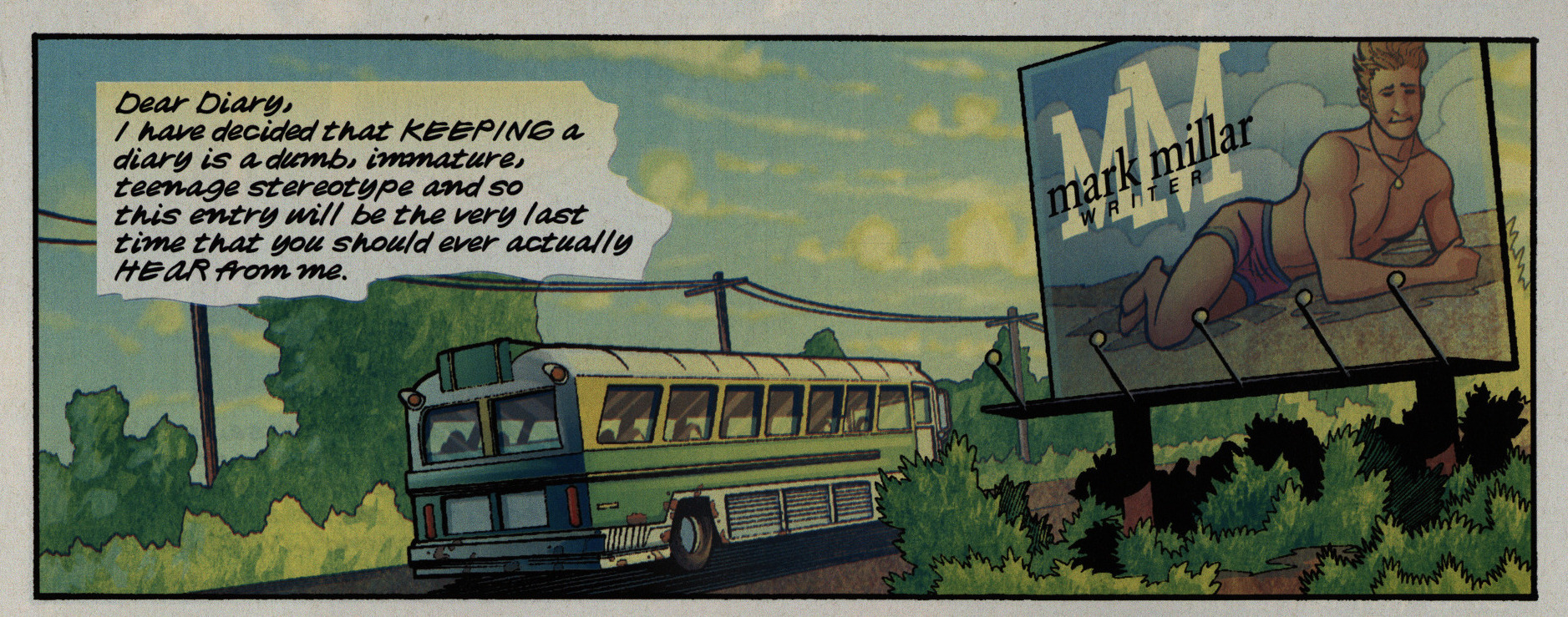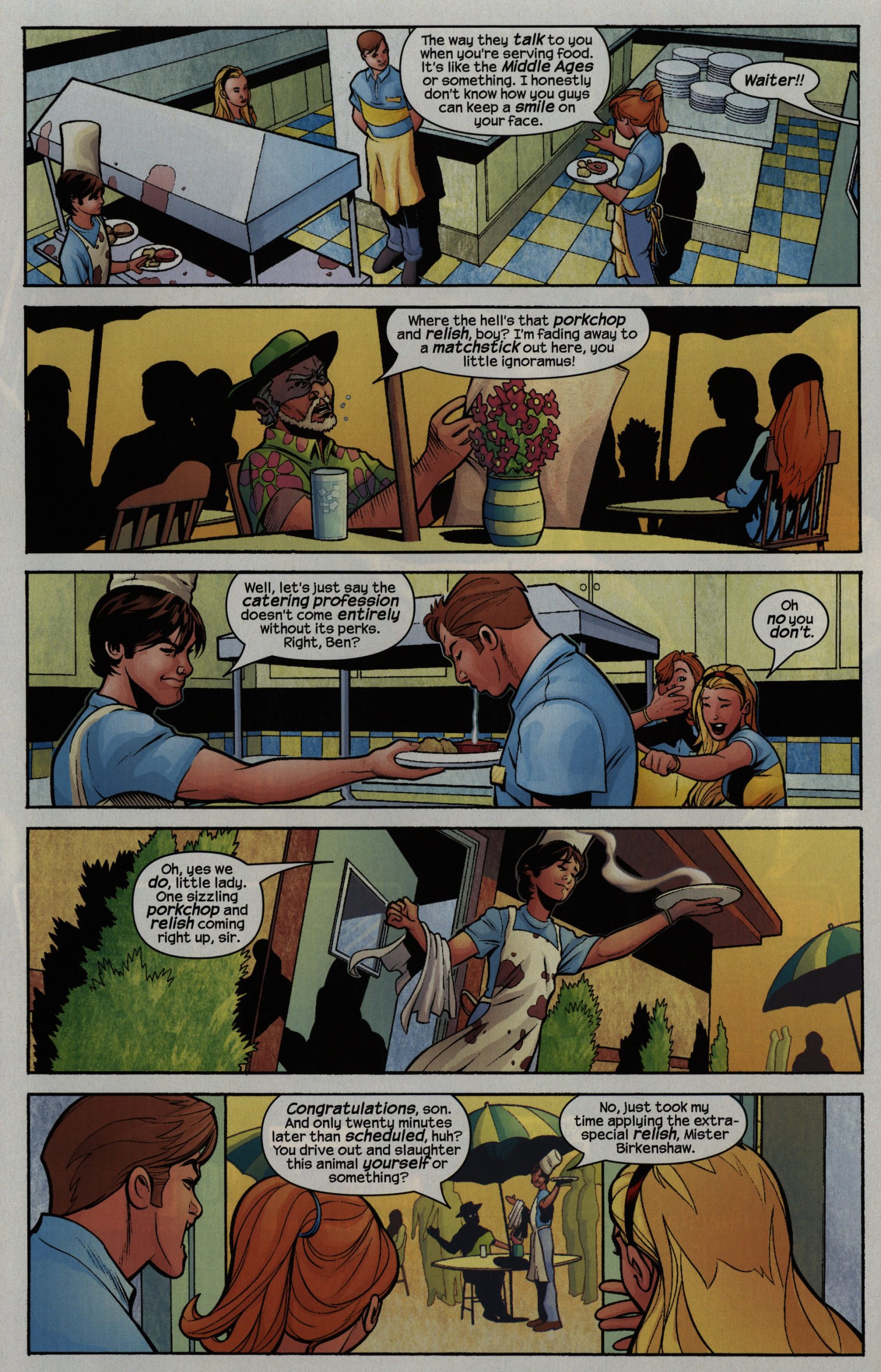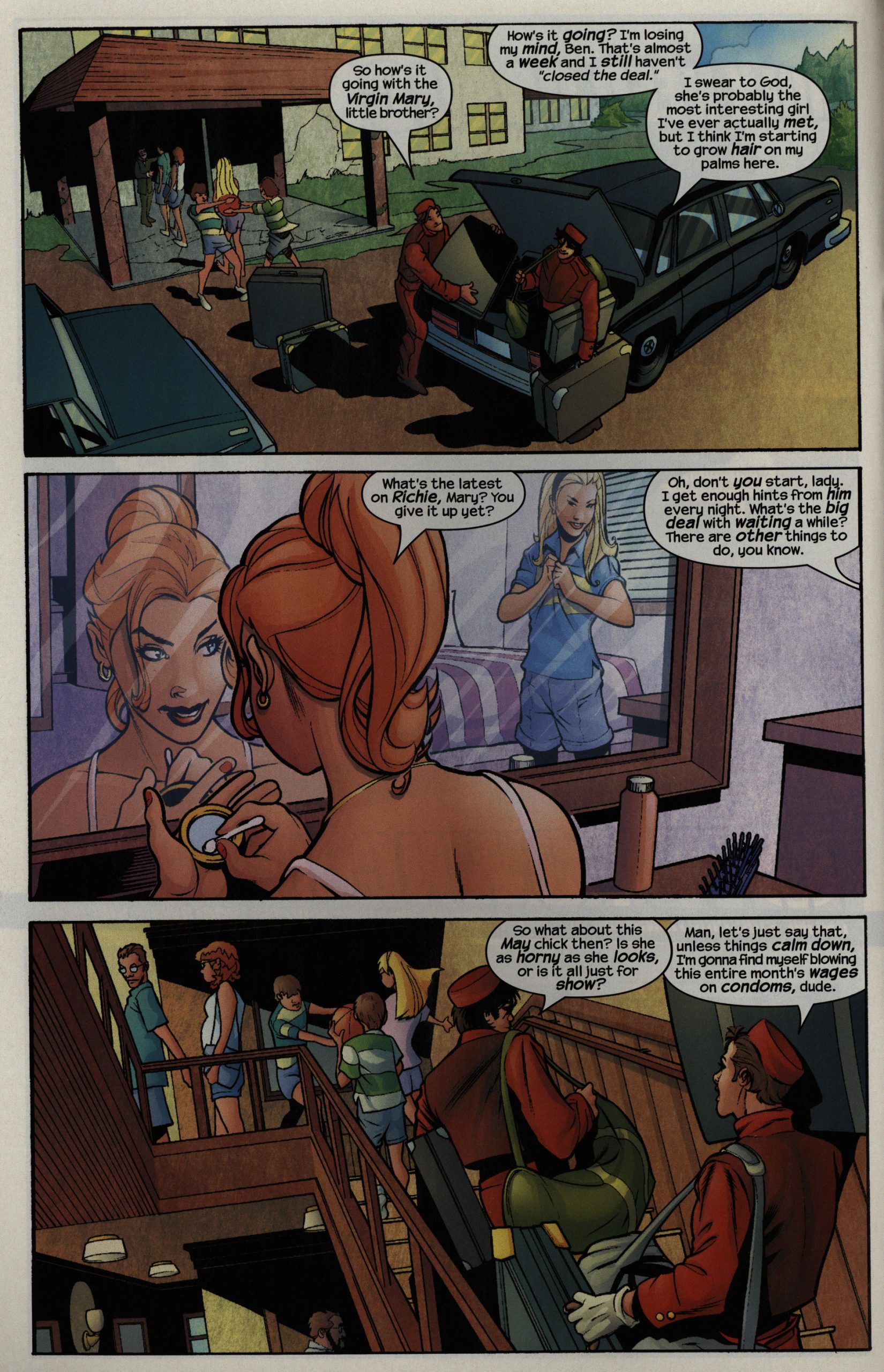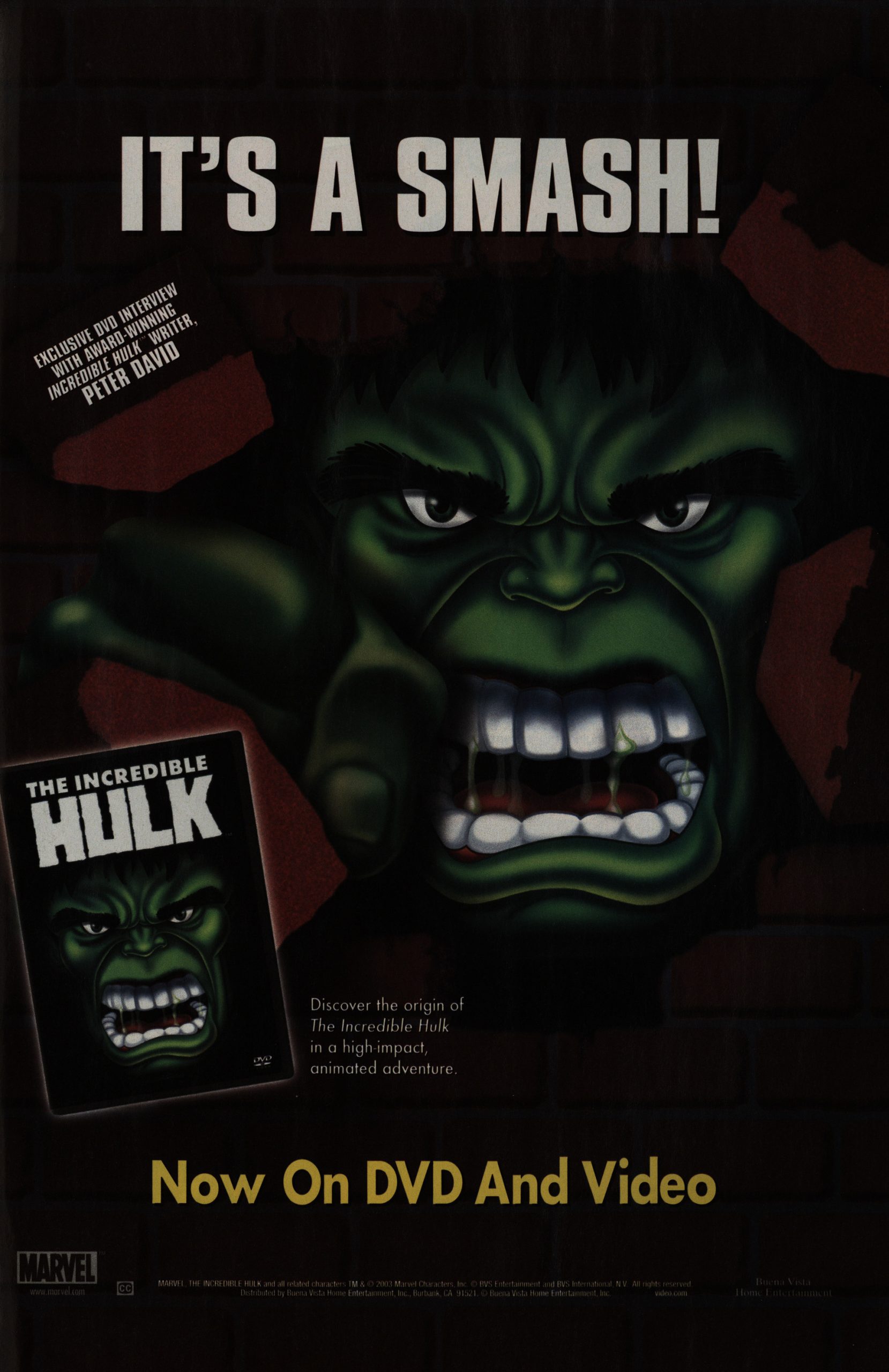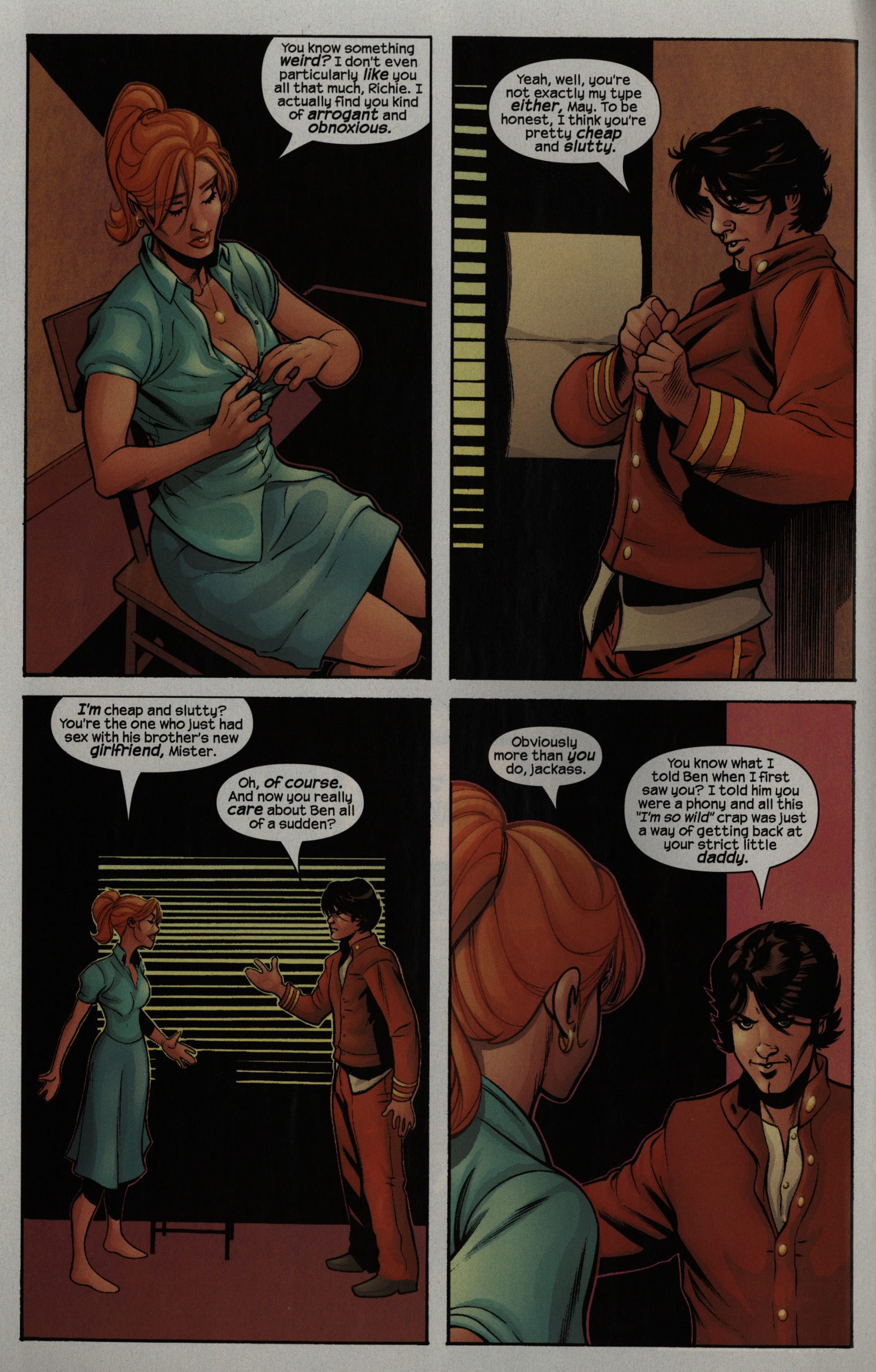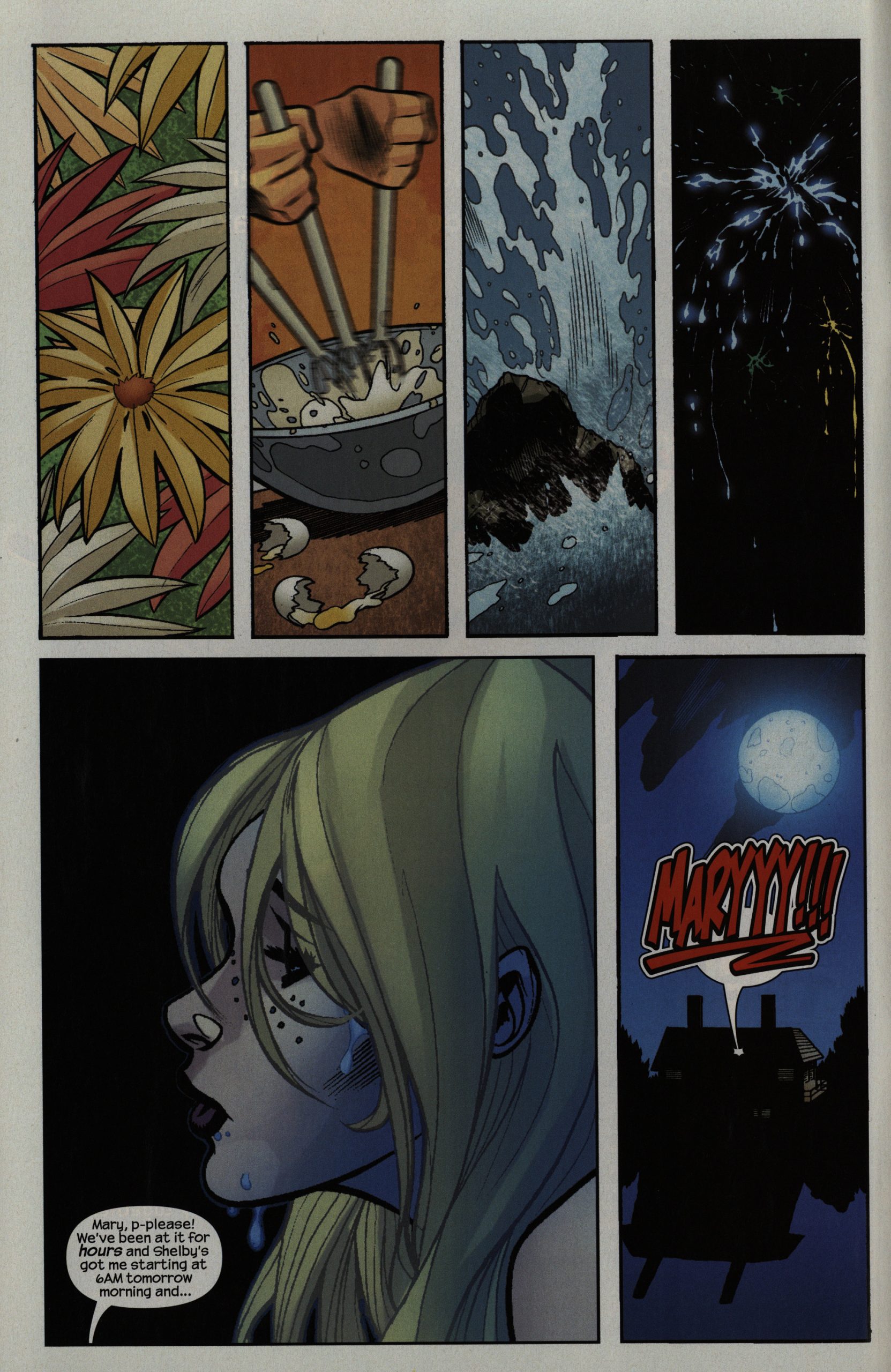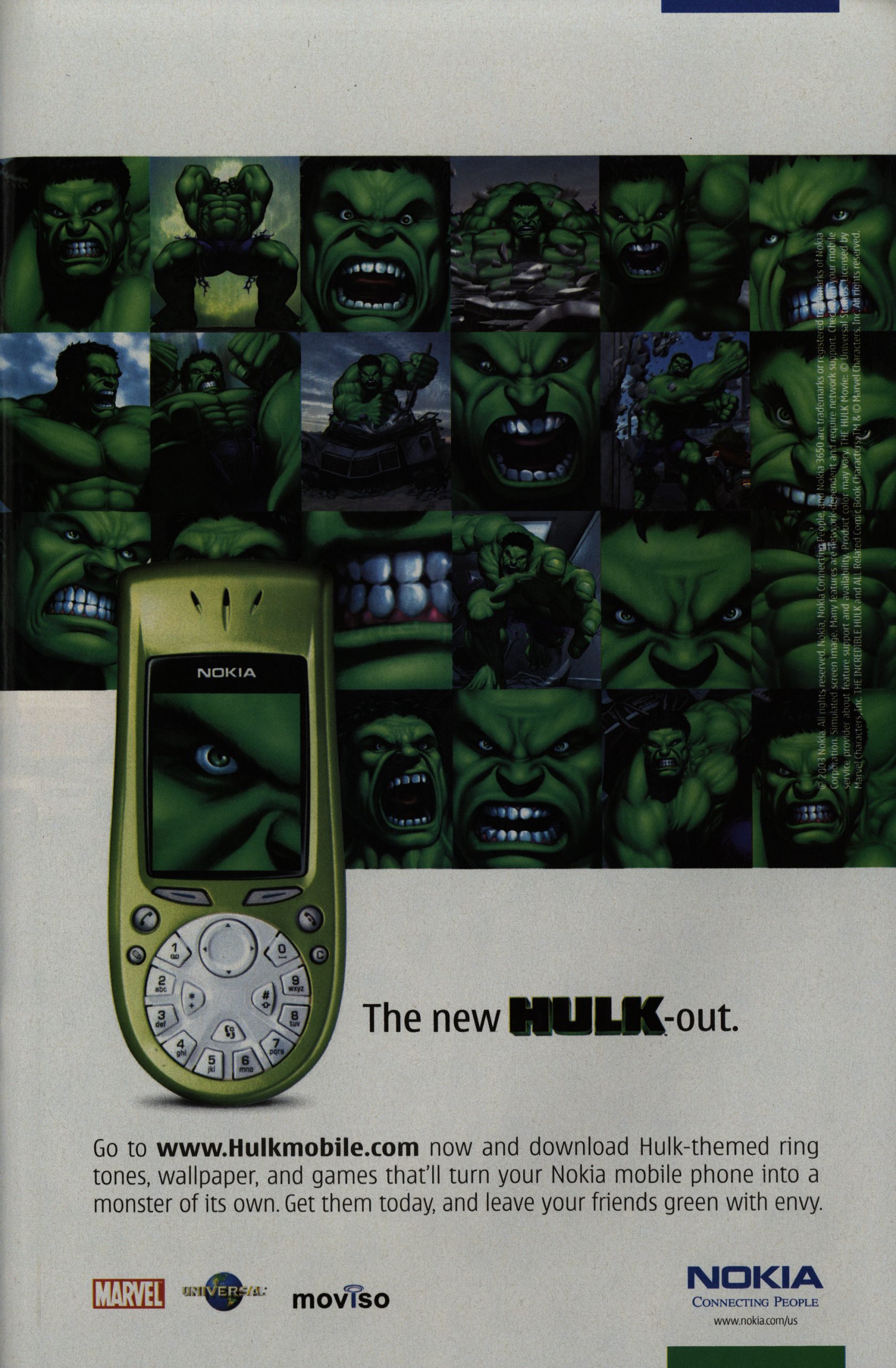Crimson Dynamo (2003) #1-6
by John Jackson Miller, Steve Ellis, Joe Corroney and Thomas Mason
This is the second series from Bill Jemas’s Epic Comics initiative, and it’s more like what I expected than the Trouble series by Mark Millar et al.
I mean, it’s about a kid who finds the Russian version of Iron Man’s suit, basically. Hilarity ensues.
But it’s told with a surprising amount of information about the Soviet Union’s break-down and about living in Russia… and as you can see above, it’s told with a lot of humour.
Jemas said that the distinguishing thing about Epic (as opposed to Marvel) was that the creators at Epic would just deliver the comics to Marvel, and there would be no editorial interference. Which makes it rather odd that they list no less than four Marvel-side editors here. And the president.
The protagonist is such a scoundrel, and Miller just can’t stop writing dialogue. It gets somewhat bogged down in places, but the dialogue is often pretty amusing.
The artwork’s pretty dynamic and sometimes leans into cartoonishness heaver than in other places. But that’s a pretty good comedic scooter scene, right?
There’s a lot going on in this six issues. There’s at least four different factions (I think?) that want the Russian Iron Man suit, and it gets a bit challenging to keep them all apart, because they’re all… kinda… not given that much space to develop? I mean, it’s a pretty clear story: It’s got good bones. It’s well-structured, and it uses the six issues effectively. But perhaps some of these, what, two dozen characters could have been edited out?
Heh heh. That’s a good R. Crumb face.
There’s a lot of comedy set pieces interspersed in all the action and plotting. I don’t think all the gags quite land? Like the above; sure, it’s fun with the near-sighted guy who doesn’t quite see the armour, but… I don’t know. The timing’s off?
I could totally see this working as a screwball action movie, though.
Ellis leaves the series halfway through, and Corroney takes over. (Very typical of Marvel.) Corroney’s artwork is more standard super-hero, which is perhaps no disadvantage:
Iron Man drops by, because why not? Marvel owns all the rights to this series.
This was a lot more fun to read than I had expected.
So this was Miller’s first comic book:
His first professional comics work appeared in 2003 in Crimson Dynamo for Marvel Comics, which led to a run on Iron Man (#73/418 – 85/430).
No wonder he put so much stuff into it.
No collected edition of this series has been published.
John Jackson Miller has crafted a poor man’s H-E-R-O (see DC Comics if you don’t get my sorry reference), wherein the central character has found a device of untold power and learns how to use it through trial and error. This s a tired premise, but there’s potential in telling it from a non-American point of view, unfortunately Miller’s interpretation of Russia seems steeped in 1990s TV and movie parodies of post-Soviet society and doesn’t feel remotely believable. I
Wat:
The problem is there’s just not enough plot to fill six issues.
*shakes head* *marimba sounds appear*
